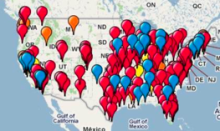Another Example of Regulatory Capture
As you observe (or hopefully, participate in), the debates around network neutrality or universal service fund reform, remember that many of the loudest voices in support of industry positions are likely to be astroturf front groups. Between extremely well-financed astroturf organizations and industry-captured regulatory agencies, creating good policy that benefits the public is hard work. It helps to study how industry has gamed the FCC in the past -- as documented by David Rosen and Bruce Kushnick in a recent Alternet article.
At the risk of being sarcastic, we can thank the FCC for working with the industry to make our phone bills to easy to read - an example is available here.




